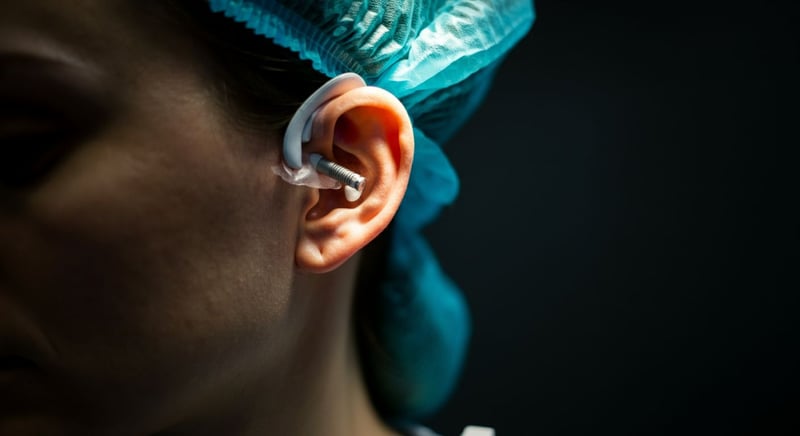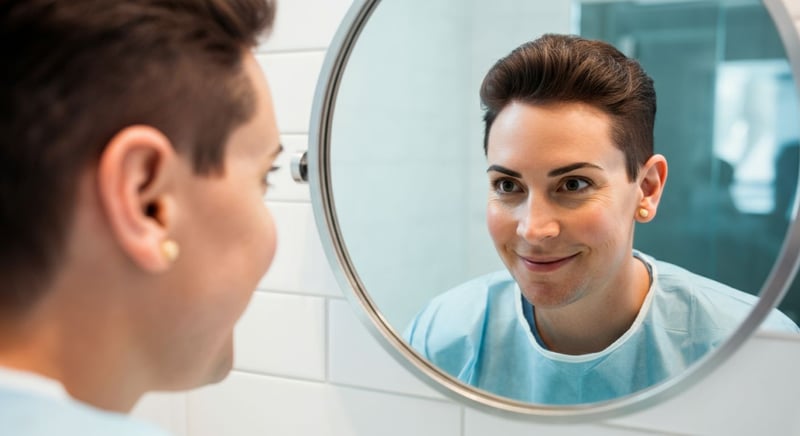Re-Ear-range Your Confidence: The Ultimate Guide to Ear Surgery
Boost your self-esteem with our guide to ear surgery. Learn about otoplasty and its benefits for a confident you.
Ear surgery or otoplasty can significantly enhance your appearance and boost your self-esteem by reshaping the ears for a more balanced look. Whether you are considering cosmetic ear surgery for aesthetic reasons or to correct structural issues, understanding the procedures can help align your expectations and outcomes. This comprehensive guide to ear surgery provides insights into various ear reshaping techniques, candidate suitability, and what to expect from your consultation through recovery.
What is Ear Surgery (Otoplasty) and Who is a Good Candidate?
Understanding Otoplasty: More Than Just Aesthetics
Ear surgery, also known as otoplasty, is a transformative procedure designed to reshape the outer ear. It addresses both aesthetic concerns and congenital disabilities. Otoplasty improves the ear's appearance and corrects structural anomalies. This surgery enhances overall facial harmony, boosting self-esteem and confidence. The process involves reshaping cartilage and repositioning the ears closer to the head. This adjustment is particularly beneficial for those self-conscious about protruding ears. The psychological impact of otoplasty can be profound, especially for younger patients facing social pressures.
Ideal Candidates for Ear Reshaping
Identifying the right candidates for ear reshaping is crucial for achieving successful outcomes and patient satisfaction. Individuals who seek otoplasty often share common characteristics. These include a desire for improved facial symmetry and realistic expectations about the surgery's results. Candidates typically include children, adolescents, and adults who are physically healthy and emotionally stable. Consideration for cosmetic ear surgery also entails evaluating the individual's ear structure and the degree of correction required. Otoplasty is suitable for addressing prominent ears, misshapen ears, or ears damaged due to injury. Effective communication between the patient and surgeon is essential to ensure alignment on treatment goals and possible results. It is important to also consider factors such as skin elasticity and cartilage quality to determine the most appropriate surgical approach.

Ear Reshaping Techniques: Finding the Right Procedure for You
Exploring Surgical and Non-Surgical Ear Reshaping Options
Various ear reshaping techniques are available, each tailored to address specific concerns. Common procedures include ear pinning surgery to correct protrusion and ear reduction surgery to decrease size. Non surgical ear reshaping options have also gained popularity, offering less invasive alternatives with limited downtime.
Finding the right procedure depends on individual anatomy, aesthetic goals, and the surgeon's expertise. Comprehensive consultations often include discussions about incisionless techniques, renowned for minimal scarring.
- Ear Pinning (Otoplasty): Addresses protruding ears by reshaping cartilage and setting ears closer to the head. Studies show it can significantly improve self-esteem in younger patients.
- Ear Reduction (Macrotia Surgery): Reduces the overall size of large ears. Surgeons often use advanced techniques to maintain natural ear proportions post-surgery.
- Incisionless Otoplasty: Uses sutures to reshape the ear cartilage without extensive incisions, leading to quicker recovery times. Advances in this method have made it a viable option for many.
Understanding the Factors That Influence Procedure Choice
Choosing the most suitable ear surgery involves several key considerations. Individual ear anatomy plays a critical role, determining which technique will yield the best results. Discussing desired aesthetic outcomes is equally important, ensuring the procedure aligns with patient expectations. The surgeon's expertise and experience also impact the decision, offering insights into potential outcomes and risks. The popularity of minimally invasive techniques, indicates a move towards reduced downtime and scarring in achieving satisfactory results, with many patients eager to quickly resume their normal routines post-procedure
- Anatomical Evaluation: Surgeons assess ear size, shape, and cartilage structure to recommend the most effective technique, such as pinnaplasty.
- Aesthetic Goals: Patients discuss their desired aesthetic changes, helping surgeons tailor the procedure to meet those specific needs. For example, adjusting the angle of the ear for a more balanced appearance.
- Surgeon Expertise: The surgeon’s familiarity with various techniques informs the choice, ensuring optimal outcomes and reducing potential complications. Experienced surgeons employ advanced methods for precision.

Pinnaplasty & Beyond: Correcting Common Ear Deformities
Addressing Protruding Ears and Other Deformities
Pinnaplasty goes beyond correcting protruding ears, addressing various ear deformities that affect appearance and function. This procedure improves aesthetics and restores natural ear contours. Surgeons customize ear surgery to each patient's needs, considering factors such as cartilage structure and skin elasticity. Techniques correct deformities resulting from trauma, congenital issues, or previous surgeries. Achieving balanced facial symmetry and natural-looking results requires a thorough understanding of ear anatomy and advanced surgical skills. Proper planning ensures optimal outcomes that meet the patient's aesthetic goals, enhancing both appearance and quality of life.
Factors Influencing the Overall Cost of Ear Surgery
Many factors influence the overall otoplasty cost of ear pinning surgery for adults. These include the complexity of the surgery, the surgeon’s expertise, and the geographic location of the clinic. More intricate ear reshaping cases that require extensive cartilage modification may incur higher fees. Surgeons with specialized skills in ear correction surgery and a proven track record often justify higher costs due to their expertise and precision. The type of anesthesia used and any additional procedures performed concurrently can also affect the final price. Each patient receives a detailed breakdown, ensuring transparency and informed decision-making throughout the process.

From Consultation to Recovery: Your Ear Surgery Journey Explained
Navigating the Consultation and Procedure Selection
The journey towards ear correction surgery starts with a thorough consultation. This first meeting is key for understanding your individual needs and expectations. Your surgeon will discuss various procedures, from traditional otoplasty surgery to minimally invasive techniques. They will explain the advantages and disadvantages of each option. Clear communication helps to ensure that you have realistic expectations. It also ensures that the selected approach aligns with your aesthetic goals and the specifics of your ear structure. A comprehensive evaluation will further help in determining the most suitable method for your ear reshaping.
- Detailed Assessment: Surgeons analyze your and ear structure to determine the best surgical or non-surgical approach.
- Procedure Overview: Each technique, including incisionless ear pinning, is explained with its potential outcomes.
- Realistic Expectations: Surgeons provide a clear understanding of what can be achieved through ear surgery.
Understanding Recovery and Seasonal Considerations
Recovery from ear surgery requires careful attention to the surgical site. Adhering to post-operative guidelines is critical for optimal healing. While recovery experiences can differ, typical advice includes managing any discomfort and preventing infection. Depending on the season, specific precautions may be necessary; for example, ear surgery recovery winter advice often highlights protecting the ears from cold to avoid complications. Whether you've undergone traditional otoplasty or a less invasive procedure, proper aftercare is essential for achieving the best possible results.
- Post-Operative Care: Follow specific instructions on wound care. This reduces the risk of complications and promotes healing.
- Seasonal Precautions: Take extra care, such as protecting ears from cold weather or excessive sun exposure, to support recovery.
- Managing Discomfort: Use prescribed medications and cold compresses to alleviate any pain and swelling during the initial recovery phase.
Customized Otoplasty Enhancing Facial Harmony and Self-Esteem
estethica specializes in otoplasty, employing both surgical and non-surgical techniques to reshape the outer ear and correct congenital disabilities. The process involves reshaping cartilage and repositioning the ears closer to the head, enhancing overall facial harmony. Skilled surgeons customize procedures based on individual needs, considering factors like cartilage structure and skin elasticity, to correct deformities resulting from trauma, congenital issues, or previous surgeries.
estethica’s expertise is highlighted through internationally awarded medical services, ensuring ethical values are upheld while prioritizing patient safety and health. estethica emphasizes a forward-thinking service approach, ensuring the transformation achieves balanced facial symmetry and natural-looking results.
Dedicated Patient Journey Ensuring Optimal Healing and Aesthetic Satisfaction
estethica's commitment to patient care is evident in a detailed consultation process where surgeons assess ear structure to determine the most suitable surgical or non-surgical approach. Clear communication about surgical and recovery expectations guarantees patient satisfaction, with detailed post-operative guidelines ensuring proper healing. estethica emphasizes managing discomfort and preventing infection as critical components of recovery, with precautions tailored to seasonal considerations like protecting ears from cold during winter.
estethica aims to maximize patient and family satisfaction through the provision of professional and experienced personnel. A dedicated system is in place for addressing complaints, requests, and suggestions, further enhancing patient trust and confidence in estethica's services.
Frequently Asked Questions
What is ear surgery (otoplasty), and who is a suitable candidate?
What ear reshaping techniques are available, and how do I choose the right one?
What does pinnaplasty entail, and what deformities can it correct?
What should I expect during the consultation for ear correction surgery?
What is involved in ear surgery recovery, and are there any seasonal considerations?
Transform your health and beauty with estethica's personalized care and innovative treatments.
📞 Schedule Your Free Consultation!